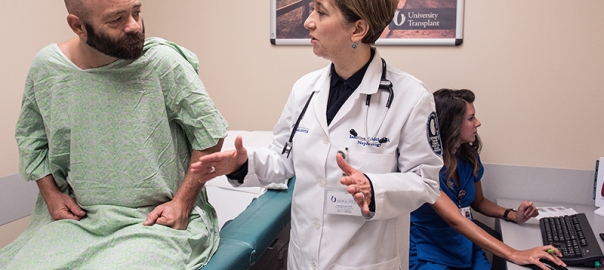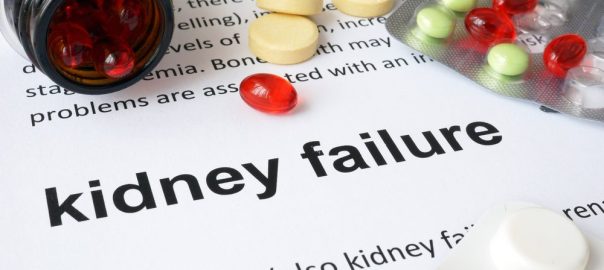After a kidney transplant, exercise is particularly important. It contributes to the preservation of your new kidney.
Before the transplant, exercise may have been difficult or even impossible. Now you have the opportunity to resume your activities step by step.
Build up your physical activity slowly
In the period after the kidney transplant, go outside every day. Just after discharge from hospital, this may only be possible for a short time. Try to build it up slowly. Listen to your body.
After a while you can start moving more. And also start exercising. You probably haven’t been able to exercise for a long time, because of your illness and the operation. Therefore, start quietly. Build up movement slowly. A physiotherapist can help you with this.
Exciting? Question guidance
Many people find it scary to start moving again after a transplant. They are afraid that their bodies cannot handle it. That is another reason why it is wise to start moving under the supervision of a physiotherapist. The physical therapist helps you to get to know your own limits. You will then move in a safe and responsible manner. This way you regain confidence in your body. Exercise is good for you. But sufficient exercise can be difficult after a kidney transplant.
How much to move?
Preferably move every day. Try to exercise moderately intensively for at least 2.5 hours a week. For example, you can walk or cycle. Moving more and more intensively is even better. This gives you extra health benefits.
Tips for sports after a transplant
When exercising, take the following into account:
- Avoid contact sports such as rugby, judo, karate and taekwondo. The transplanted kidney is less deep in your body than your own kidneys, and is therefore more vulnerable. Football or other team sports are possible. You can wear a protective kidney belt.
- Tell your trainer or supervisor that you have been kidney transplanted. They can then take this into account. Does the trainer ask questions that you cannot answer? Then consult with your urologist.
- After transplantation you should take anti-rejection medicines. These medicines reduce your resistance. Therefore, do not overdo sports. If you have sport as a hobby or if you exercise to stay in good shape, there is nothing wrong. But if you want to exercise at a high level, it is better to consult your urology doctor first. You will then need expert guidance.
- Do not exercise if you do not feel well or if you have a fever. Wait a few days until you recover and then pick up your training again.
- Stop exercising if you feel dizzy or light in your head. Or if you have chest, neck or arm pain. Contact your urology doctor.
Why is exercise after transplantation important?
There are many different reasons to get more exercise.
Good for heart and blood vessels
Because of the kidney damage and its treatment you have a higher risk of cardiovascular disease. Exercise is good for your heart and blood vessels. This allows you to keep your heart and blood vessels in the best possible condition.
Keeps the blood pressure at the right level
Anti-rejection drugs can cause high blood pressure. High blood pressure is harmful to your kidney. By exercising enough, you can keep your blood pressure under control.
Healthy weight
Many transplant patients arrive in the year after transplantation. Overweight and high body fat give an increased risk of kidney damage. And also to other diseases, such as diabetes and cardiovascular diseases. Exercise helps you to reach a healthy weight and to stay at a good weight. Exercise also ensures a good balance between body fat and muscles.
A more favorable cholesterol level
There are 2 types of cholesterol: a good and a bad one. The bad cholesterol (LDL-cholesterol) contributes to arterial calcification. The good cholesterol (HDL-cholesterol) takes care of the removal of the bad cholesterol. When you exercise enough, your good cholesterol rises. Your body will then be better able to remove the bad cholesterol.
Stronger bones
The anti-rejection drugs can cause osteoporosis (osteoporosis). This is a side effect of some of these medicines. Exercise and sports ensure that your bones remain strong.
More energy and a better condition
People who exercise regularly generally feel better and more energetic, can relax more easily and are more resistant to stress.
Better quality of life
Sufficient exercise contributes in many ways to a healthier and more vital body. Regular exercise increases the quality of life. All daily things go easier if you feel fit and healthy.
Preferably go outside to move. You will get a lot of daylight, and that helps against sombre feelings. Daylight is also needed for vitamin D. This vitamin helps to keep the bones strong.


